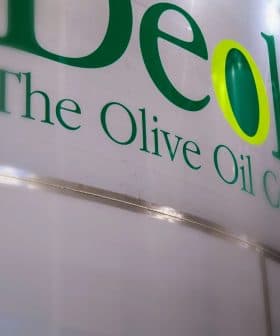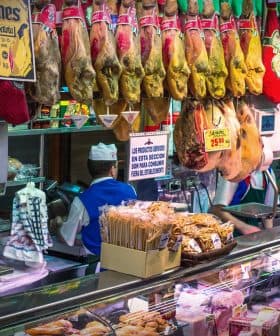Tariff Threats, Covid Aftermath Hang Over Spain's Table Olive Harvest
Table olive producers are expecting a slightly better harvest this year than they had in 2019. In spite of this, uncertainty over the future of the sector remains.
COAG Andalusia expects a slightly higher 2020 table olive harvest in Spain, but below the levels of the past five years, amid trade tensions with the U.S. and the ongoing Covid-19 pandemic. Producers fear increased tariffs on table olives by the U.S. would put the livelihood of 7,000 farmers at risk and exacerbate existing challenges faced by the sector.
The Coordinator of Agriculture and Livestock Organizations (COAG) in Andalusia has released its first estimates for the 2020 table olive harvest – one that will arrive amid escalating trade tensions with the United States and the country’s ongoing Covid-19 pandemic.
Antonio Rodríguez, the head of table olives for COAG Andalusia, said that he expects production to rebound in the world’s largest table olive producing nation after last year’s poor harvest.
Less than two months before the next campaign for table olives begins and this one already presents itself with plenty of uncertainty.
“According to our technicians, this will be a somewhat higher harvest than last year, with great quality and good quantities, but lower than the previous five seasons, not reaching 500,000 tons,” he said.
Preliminary figures from the International Olive Council put the 2019 table olive harvest in Spain at 500,000 tons, but these have not been revised since November. Table olive production in Spain has generally trended downward since its peak in 2015.
See Also:2020 Harvest UpdatesIn spite of the slight production rebound and boost in domestic demand for table olives, Rodríguez said that 2020 will be a tough harvest for producers.
“Less than two months before the next campaign for table olives begins and this one already presents itself with plenty of uncertainty,” he said.
Based on current weather conditions, the harvest will begin in September – two months earlier than normal. Table olive producers will also have to coordinate with local governments to prevent the spread of Covid-19 during the harvest.
For the producers who harvest their trees using machines, this will not be an overly difficult burden.
However, Rodríguez said that producers harvesting olives with a Protected Geographical Indication – specifically the producers of Manzanilla and Gordal de Sevilla PGIs – would likely need help lowering the costs associated with hand-harvesting and processing these local specialties while following the necessary social distancing and safety protocols.
Once the table olives have been processed and are ready to be sold to retailers and exporters, the uncertainty continues.
A decision by the United States Trade Representative about whether or not to increase the 25 percent tariff currently faced by green table olive exports from Spain to the U.S. is expected to come in August.
The tariffs were ratified by the World Trade Organization (WTO) and implemented last October in retaliation to the European Union’s illegal subsidies to Airbus, a move that the Spanish government has defiantly stood by.
The E.U. has also been defiant on the issue and recently announced a list of tariffs that it plans to impose on U.S. imports to the trading bloc.
The anticipated retaliatory tariffs come as the E.U. expects a positive result from its own case that is currently being deliberated on by the WTO. The trading bloc alleges that the U.S. has illegally subsidized its own aircraft manufacturer, Boeing. Legal experts expect the E.U. to win the case.
While legal wrangling continues in Geneva, many in the table olive sector fear that the current 25 percent tariff will be increased to 100 percent as the U.S. seeks to increase pressure on the E.U. to make a deal. Producers also fear that new tariffs will be imposed on black table olives.
Asemesa, the Spanish Association of Exporters and Industrialists of Table Olives, has said that the livelihood of 7,000 farmers would be put at risk if this worst-case tariff scenario were to come to fruition.
The trade group has strongly lobbied the Spanish government and European Commission to solve the dispute without having the agricultural sector take the collateral damage.
“[The government of Spain and the E.U.] must act urgently to protect farmers and the entire sector and not continue idly waiting for the Boeing case to be resolved to try to negotiate then, because a very significant part of the olive sector may have disappeared before then,” Asemesa said.
In spite of previous tariffs and the threat of new ones, the U.S. remains the largest destination for all types of Spanish table olive exports. However, these exports have steadily decreased since the imposition of the first set of tariffs on black olives nearly two years ago.
According to data from the International Trade Center, Spanish table olive exports to the U.S. fell by more than 8,000 tons from 2017 to 2019, even as U.S. table olive imports increased by nearly 20,000 tons over the same period. This has led to an estimated loss of $31.6 million per annum for the sector.
Asemesa concluded that additional tariffs on table olives would push producers already contending with the uncertainties associated with Brexit, a pending free trade agreement with the Mercosur and domestic reforms to the Food Chain Law over the edge.
“[This] is the straw that breaks the camel’s back, after a long list of problems and threats that has plagued the sector in recent years,” the trade group said.









